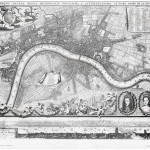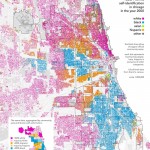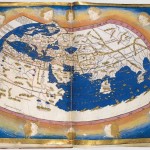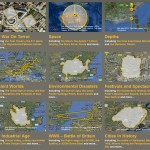Berkeley’s Global Metropolitan Observatory is a site focusing on large trasformation of cities. Using aerial imagery mainly coming from the Landsat 7 satellite, large B/W density maps at the same graphic scale are produced.
A 50×50 km grid is then superimposed onto each map, for the sake of an easier comparization.
Beijing in 1990 (571.00 sq km; population: 7,362,000):

Beijing in 2005 (1423.28 sq km; population: 10,718,000):

Beijing in 2010 (6421.51 sq km; population: 11,741,000):

Guangzhou & Foshan in 2000:

Istanbul in 2000 (434.50 sq km; population: 8,744,000):

Istanbul in 2005 (940.99 sq km; population: 9,709,000):

Mexico City in 2005 (1060.45 sq km; population: 18,735,000):

Mexico City in 2010 (1180.75 sq km; population: 19,460,000):

Shanghai in 2005 (510.25 sq km; population 1999: 8,214,384; population 2004: 14,503,000):

Shanghai in 2010 (510.25 sq km; 2010 – 15,786,000. Shanghai Statistical Bureau estimates an additional 8,977,000 in “floating population. According to UN estimates, Shanghai will reach 23.2 Million inhabitants by 2015 and rank 4th among the world’s largest cities):

Paris in 2005 (830.00 sq km; 1999 – population 1999: 9,319,367 greater metropolitan area; population 2004: 9,692,000 (includes 162 communes in 4 Departments adjacent to Paris):

Rome in 2000 (501.00 sq km; population: 2,791,000):






Hello Fosco,
Your works are brilliant.
Is it possible to purchase some of your drawings for education purposes?
John
Thank you John, but if you refer to these maps, they aren’t my own works: you should contact Berkeley’s Global Metropolitan Observatory (follow the link in the post) and ask them for purchasing. By the way, thanks also for following Socks!